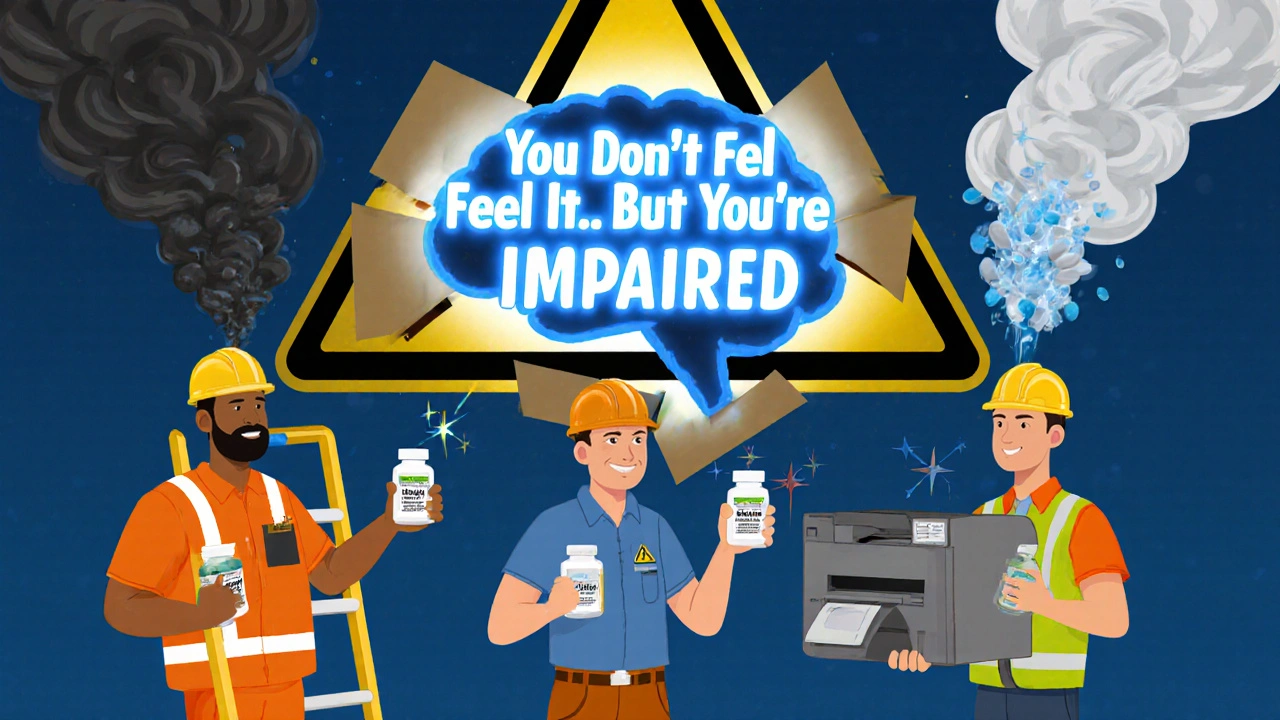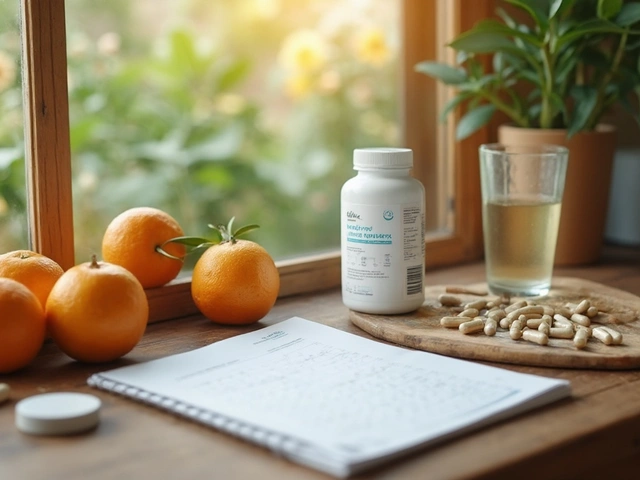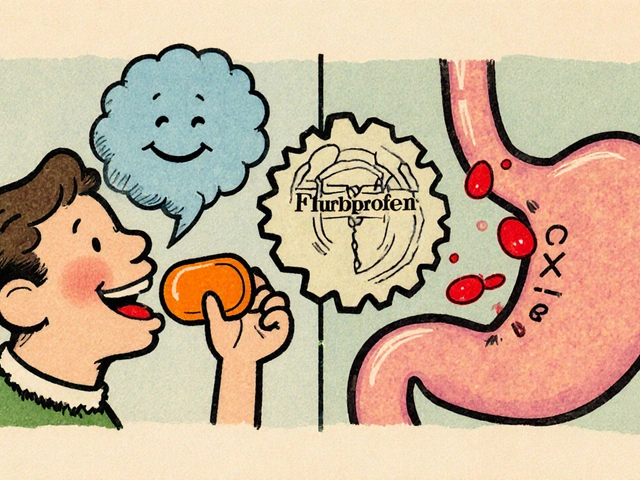
It’s 6 a.m. and you’re behind the wheel of a delivery truck. Your allergies are acting up, so you took a pill last night to sleep better-and maybe to keep your nose clear today. You don’t feel sleepy. In fact, you feel fine. But your reaction time is slower. Your focus is fuzzy. You almost missed the last turn. And you didn’t even realize it.
This isn’t a hypothetical. It’s happening every day to people who don’t know they’re impaired. First-generation antihistamines like diphenhydramine (Benadryl), chlorpheniramine, and hydroxyzine are still widely used for allergies, colds, and even sleep. But what most people don’t realize is that these medications can seriously affect their ability to work safely-even when they don’t feel drowsy.
How Antihistamines Really Affect Your Brain
Antihistamines block histamine, a chemical your body releases during allergic reactions. But histamine isn’t just in your nose-it’s also in your brain, where it helps keep you awake and alert. First-generation antihistamines are small, fat-soluble molecules that slip easily through the blood-brain barrier. Once inside, they quiet down histamine activity. That’s why you feel sleepy. But here’s the dangerous part: you might not feel it.
Studies show that people taking these drugs often report, “I don’t feel tired,” yet their performance on cognitive tests drops by 25-30%. In driving simulators, they drift out of their lanes 50% more often. They miss cues. They react slower. Their decision-making gets sloppy. This gap between how you feel and how your brain is actually working is what makes these medications so risky at work.
Dr. G.G. Kay, a neurologist at Georgetown University, found that sedating antihistamines are frequently found in the toxicology reports of pilots and truck drivers who died in crashes. The problem isn’t just accidents-it’s lost productivity, increased errors, and higher injury rates on job sites. A nurse working night shifts told us she switched from diphenhydramine to loratadine and immediately noticed she could stay focused during procedures. “I didn’t know how much I was struggling before,” she said.
The Difference Between First- and Second-Generation Antihistamines
Not all antihistamines are the same. Second-generation options like loratadine (Claritin), cetirizine (Zyrtec), and fexofenadine (Allegra) were designed to avoid the brain. They’re larger, less fat-soluble, and actively pumped out of the central nervous system by a protein called P-glycoprotein. The result? Minimal sedation.
Here’s what the data shows:
| Feature | First-Generation (e.g., Benadryl) | Second-Generation (e.g., Claritin, Allegra) |
|---|---|---|
| Crosses blood-brain barrier? | Yes | No |
| Typical half-life | 15-30 hours | 8-12 hours |
| Impairs driving/simulation performance? | Yes, significantly | No, similar to placebo |
| Next-day drowsiness common? | Yes, 37% of users | Under 5% |
| Interaction with alcohol? | Strongly increases impairment | Minimal |
| Recommended for safety-sensitive jobs? | No | Yes |
Second-generation antihistamines don’t just reduce drowsiness-they reduce risk. In one study, 78% of Allegra users reported no drowsiness. Only 12% of Benadryl users said the same. For people working with heavy machinery, driving, or in healthcare, that difference isn’t just convenient-it’s life-saving.

Who’s at Risk? The Hidden Workforce
It’s not just truck drivers and pilots. Construction workers on ladders, factory operators near moving equipment, nurses administering medications, warehouse staff using forklifts, and even office workers operating heavy printers or machinery can be affected. The CDC reports that over one in four older adults fall each year-and first-generation antihistamines are a major contributor. Falls aren’t just accidents; they lead to fractures, hospitalizations, and long-term disability.
One Reddit user, a commercial truck driver, shared his story: “I took Benadryl for allergies. Didn’t feel sleepy. But when the DOT officer asked me to touch my nose with my finger, I missed twice. He pulled me over. I didn’t know I was impaired until I failed the test.”
These aren’t rare cases. The National Highway Traffic Safety Administration estimates 100,000 police-reported crashes each year are caused by drowsiness. That number doesn’t include unreported incidents or workplace accidents. And because many people don’t connect their medication to their performance, they keep taking it-day after day.
Why the Warnings Don’t Work
You’ve seen the label: “May cause drowsiness. Do not operate machinery.” But these warnings are easy to ignore. People think, “I’ve taken this before and I’m fine.” Or, “I just need to get through today.”
Research shows these labels have little impact. A 2022 FDA analysis found only 43% of first-generation antihistamine packaging includes clear timing advice (like “take at night”), compared to 87% of second-generation products. And even when warnings are clear, people don’t connect them to their job.
Some employers are stepping up. As of 2023, 41% of Fortune 500 companies now include antihistamine use in their occupational health policies. The FAA bans first-generation antihistamines for pilots. The Department of Transportation requires safety training on medication risks. In Europe, regulators have issued official warnings for transport workers.
But for most workers, the guidance is still missing. Many don’t know which antihistamine is safe. They assume all allergy pills are the same. They don’t ask their pharmacist. They don’t check the label.

What You Can Do Right Now
If you take antihistamines and work in any job where alertness matters, here’s what to do:
- Check the active ingredient. If it’s diphenhydramine, chlorpheniramine, hydroxyzine, or promethazine, it’s sedating. Avoid it during work hours.
- Switch to a second-generation option. Loratadine, cetirizine, and fexofenadine are widely available over the counter. Bilastine (available in Australia and Europe) is even better-studies show it doesn’t impair performance even at double the dose.
- Test it at home first. Take your new medication on a weekend. See how you feel the next day. Can you concentrate? Do you feel sluggish? If yes, wait longer before using it during work.
- Wait 24 hours after a sedating antihistamine. Even if you feel fine, the drug can linger in your system. For safety-sensitive roles, the National Sleep Foundation recommends 24 hours before returning to duty.
- Talk to your doctor or pharmacist. Don’t assume your allergy pill is safe. Ask: “Is this the kind that makes people drowsy? Is there a non-sedating alternative?”
One nurse working night shifts told us she still takes diphenhydramine-but only at bedtime. “It helps me sleep, and I don’t need to be alert then,” she said. “But during my shift? I take loratadine. No risk. No guesswork.”
The Bigger Picture
This isn’t just about personal choice. It’s about workplace safety culture. When employers ignore medication risks, they’re not just risking accidents-they’re risking lives. And when workers don’t know the difference between antihistamines, they’re unknowingly putting themselves and others in danger.
The global antihistamine market is worth over $3.8 billion. Two-thirds of it is now second-generation drugs-because people are choosing safety. The trend is clear: non-sedating options are becoming the standard. The American Nurses Association found that 73% of nurses now use only non-sedating antihistamines.
And it’s not just about allergies. Many people take these pills for sleep, motion sickness, or nausea. That’s fine-if you’re not working. But if your job requires you to be alert, you need to know what’s in your system.
There’s no shame in switching. There’s no weakness in asking. And there’s no excuse for ignoring the science. The data is clear. The tools are available. The choice is yours.
Next time you reach for an allergy pill, check the label. Not because you might feel sleepy-but because you might not. And that’s the most dangerous part of all.







Been there done that took Benadryl before a long haul and barely made it to the rest stop thought I was fine till my eyes started rolling back in my head
Bro this is so real 😭 I switched to Claritin last year and my boss actually asked if I was feeling better lol
They dont want you to know this but Big Pharma made second-gen antihistamines more expensive so youll keep buying the sleepy ones 🤡
HOW CAN PEOPLE BE SO STUPID??? I mean seriously??? You take Benadryl and then drive??? Are you trying to kill someone??? I have a cousin who lost his leg because of this!!! I cant believe this is even a thing!!!
So now we're banning medicine because some people are dumb? Next they'll ban caffeine because someone crashed a forklift after a triple espresso
AMERICA IS WEAK! We used to be tough! Back in my day we worked through pain! We didn't need no fancy pills! You think your job is hard? I worked 18 hour shifts in Vietnam with a fever and a rifle! Now everyone needs a nap and a non-sedating antihistamine!
wait so fexofenadine is allegra right? i thought it was something else lol i always get confused with the names i take zyrtec but my buddy says its worse than benadryl idk man
As a medical professional from India, I have observed that the lack of awareness regarding sedating antihistamines is not confined to the United States. In rural areas, diphenhydramine is often the only available option, and patients are unaware of its cognitive effects. Education and affordable access to second-generation alternatives are critical in low-resource settings.
My cousin is a forklift operator. He switched to loratadine. No more near-misses. Simple fix.
Its not the drug its the illusion of control we all think we have until the machine doesnt respond when we need it to
I used to take Benadryl for sleep and then work nights 😅 switched to Zyrtec and now I actually enjoy my job. Thank you for this post!!
we think we're awake but the brain is always running silent programs